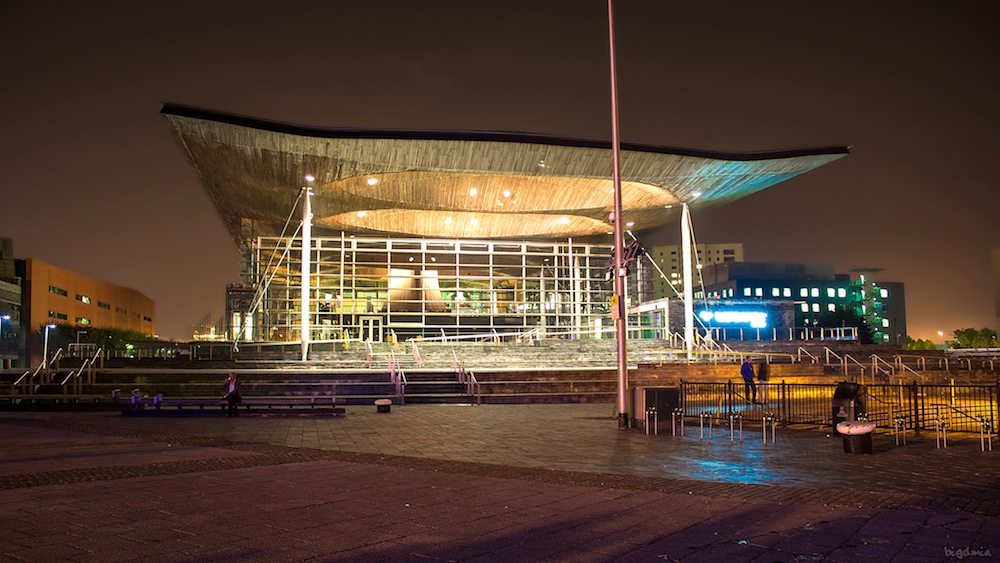The Urban Land Institute named architect Lord Richard Rogers the 2015 recipient of the J.C. Nichols Prize for Visionaries in Urban Development.
The award, the institute’s highest honor, recognizes individuals or groups that demonstrate a “longtime commitment to the creation of communities that reflect the highest standards of design and development," according to the trade group.
Rogers is the Founder of Rogers Stirk Harbour + Partners in London. He has been an architect and urban design adviser to public officials for 53 years. Rogers' portfolio includes more than 150 projects of varying types over his career, most of which are situated in London or other cities in Europe.
He is most known for Chiswick Park, Lloyd’s building and Millennium Dome in London, the National Assembly (or, the Senedd) for Wales in Cardiff, United Kingdom, and the Pompidou Centre in Paris. He also worked on the 3 World Trade Center in New York City, which will open in 2018.
"Richard's work, whether it is architecture or advocacy, shines a spotlight on the challenges that people in urban areas are facing and offers solutions that can be implemented," 2015 Nichols Prize Jury Chairman Marilyn Taylor said in a statement. "Living well in cities and extending that sense of wellness to everyone – those are the impacts that Richard is making with his words, his advocacy and his work. His impact is as much about how he has affected public policy as in the buildings he has built. Better ideas about housing, or about how public space meets a building – that's where Richard's contribution is."
Rogers will be awarded the $100,000 prize at the ULI Europe Conference in Paris in February.
Related Stories
| Nov 18, 2014
5 big trends changing the world of academic medicine
Things are changing in healthcare. Within academic medicine alone, there is a global shortage of healthcare professionals, a changing policy landscape within the U..S., and new view and techniques in both pedagogy and practice, writes Perkins+Will’s Pat Bosch.
| Nov 18, 2014
Grimshaw releases newest designs for world’s largest airport
The airport is expected to serve 90 million passengers a year on the opening of the first phase, and more than 150 million annually after project completion in 2018.
| Nov 17, 2014
Nearly two years after Sandy Hook, the bloodshed continues
It’s been almost two years since 20 first-graders were shot and killed at Sandy Hook Elementary School in Newtown, Conn., but these incidents, both planned and random, keep occurring, writes BD+C's Robert Cassidy.
| Nov 17, 2014
Hospitality at the workplace: 5 ways hotels are transforming the office
During the past five years, the worlds of hospitality and corporate real estate have undergone an incredible transformation. The traditional approach toward real estate asset management has shifted to a focus on offerings that accommodate mobility, changing demographics, and technology, writes HOK's Eva Garza.
| Nov 17, 2014
Developments in 3D printing can assist architecture in the smallest details
Researchers at the Department of Energy’s Oak Ridge National Laboratory (ORNL) have developed a way for 3D printed metals to be produced with an unprecedented degree of precision.
| Nov 17, 2014
A new BSL-3 public-safety lab debuts in Vermont
The laboratory will be used to perform a wide range of analyses to detect biological, toxicological, chemical, and radiological threats to the health of the population, from testing for rabies, West Nile, pertussis and salmonella to water and food contaminants.
| Nov 17, 2014
'Folded facade' proposal wins cultural arts center competition in South Korea
The winning scheme by Seoul-based Designcamp Moonpark features a dramatic folded facade that takes visual cues from the landscape.
| Nov 17, 2014
Workplace pilot programs: A new tool for creating workspaces employees love
In a recent article for Fast Company, CannonDesign's Meg Osman details how insurance giant Zurich used a workplace pilot program to empower its employees in the creation of its new North American headquarters.
| Nov 17, 2014
Mastering natural ventilation: 5 crucial lessons from design experts
By harnessing natural ventilation, Building Teams can achieve a tremendous reduction in energy use and increase in occupant comfort. Engineers from SOM offer lessons from the firm’s recent work.















